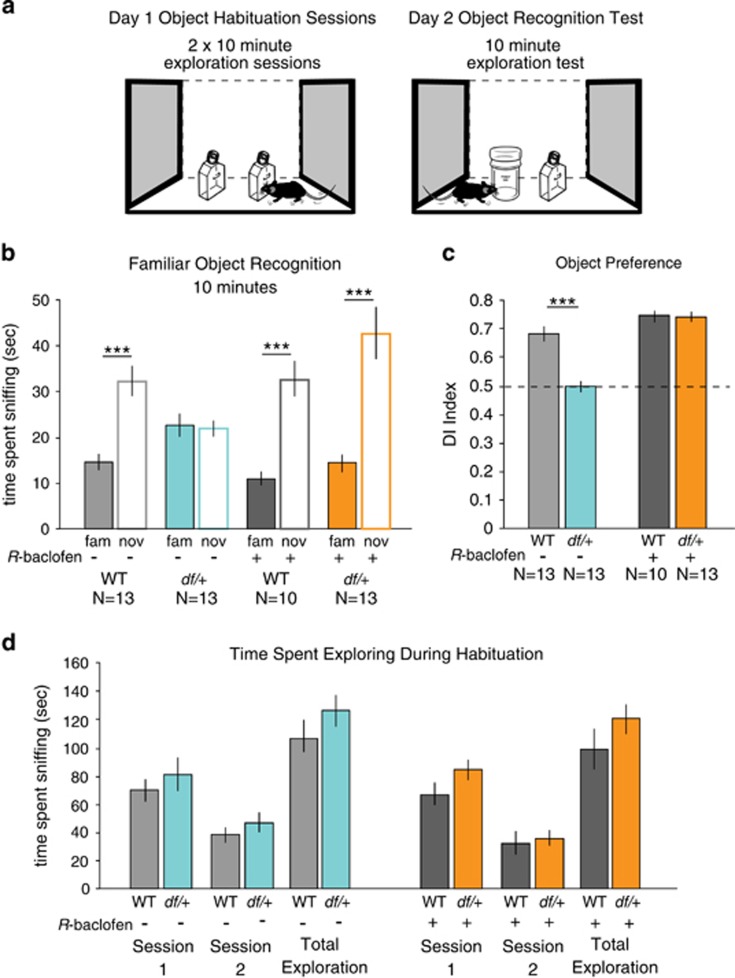Figure 1.
Chronic R-baclofen treatment restores novelty detection deficits in an object recognition task in 16p11.2 df/+ mice. (a) Experimental design of novel object recognition task. (b) Vehicle-treated 16p11.2 df/+ mice show impaired novelty detection on experimental test day 2 when presented with a familiar and novel object compared with vehicle-treated WT (WT veh, fam vs nov: t(12)=6.51; p<0.001; df/+ veh, fam vs nov: t(12)=0.467; p=0.649; WT R-baclofen, fam vs nov: t(9)=7.68; p<0.001; df/+ R-baclofen, fam vs nov: t(12)=6.54; p<0.001). (c) As depicted in panel (b), vehicle-treated 16p11.2 df/+ mice show no preference for the novel or familiar object, exploring each approximately equally, whereas WT mice treated animals favor the novel object, as determined by calculating discrimination index (WT, veh vs df/+, veh: t(24)=6.49; p<0.001). In comparison, similar to vehicle-treated WT animals, R-baclofen-treated WT and 16p11.2 df/+ mice show significantly more exploration of a novel object compared with a familiar object, as depicted by a discrimination significantly >0.5. Chronic R-baclofen treatment restores novelty detection in 16p11.2 df/+ mice, making them indistinguishable from WT mice (WT, R-baclofen vs df/+, R-baclofen: t(21)=0.063; p=0.950). Two-way ANOVA, genotype: F=23.0, p<0.001; treatment: F=62.4, p<0.001; genotype × treatment: F(3,45)=22.2, p<0.001. (d) There is no significant difference in time spent exploring each of two identical objects during the first object habituation session in either genotype regardless of treatment nor is there any significant difference in total time spent exploring during either habituation session (WT veh vs df/+ veh, session 1: t(24)=0.802, p=0.430; WT veh vs df/+ veh, session 2: t(24)=1.100, p=0.282; WT veh vs df/+ veh, total: t(24)=1.20, p=0.241; WT R-baclofen vs df/+ R-baclofen, session 1: t(21)=1.84, p=0.079; WT R-baclofen vs df/+ R-baclofen, session 2: t(21)=0.614, p=0.546; WT R-baclofen vs df/+ R-baclofen, total: t(21)=1.64, p=0.116). All data for all figures are plotted as mean±SEM; n indicates the number of animals. ***p<0.001, R-baclofen vs vehicle within genotype.

